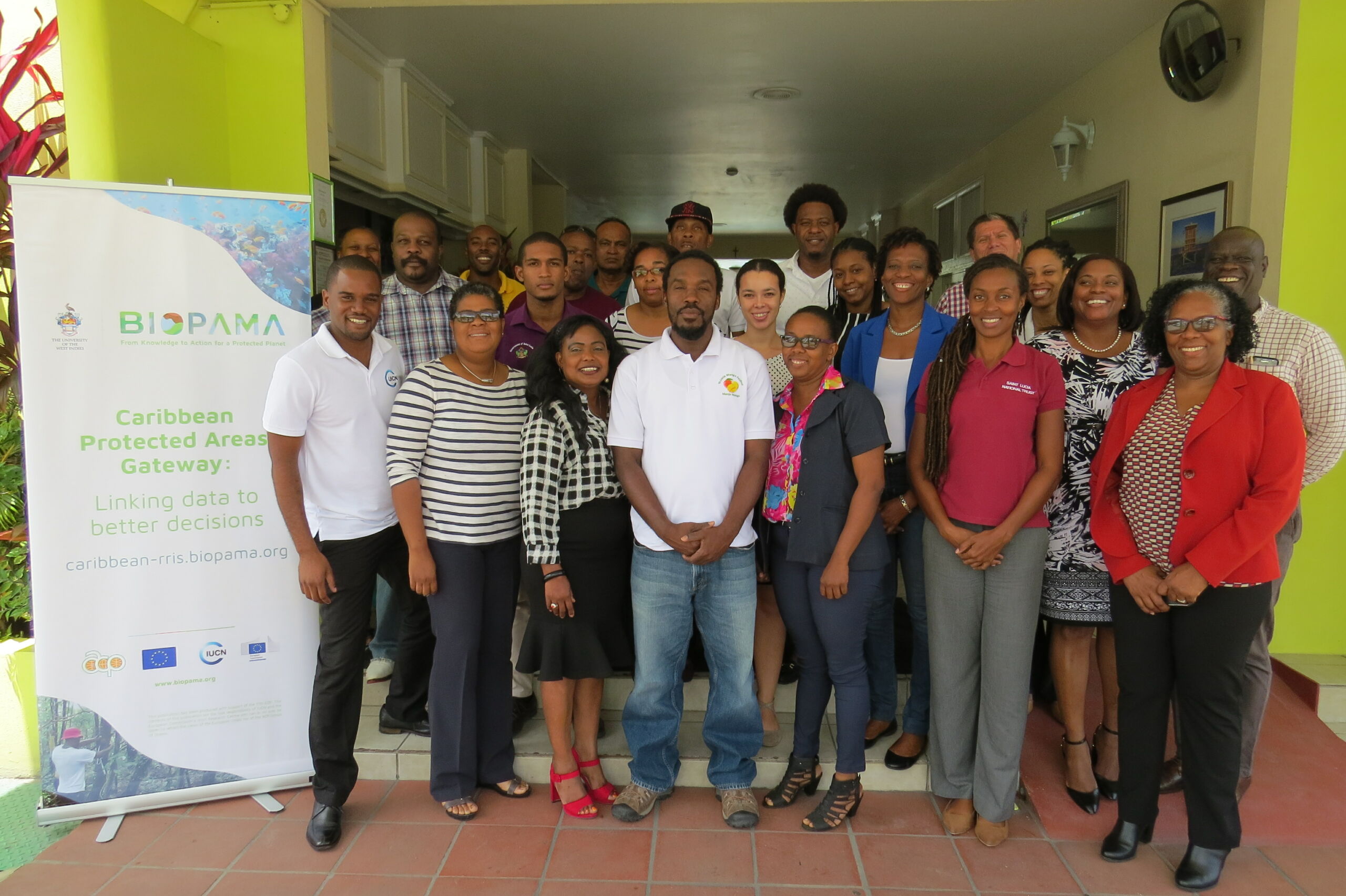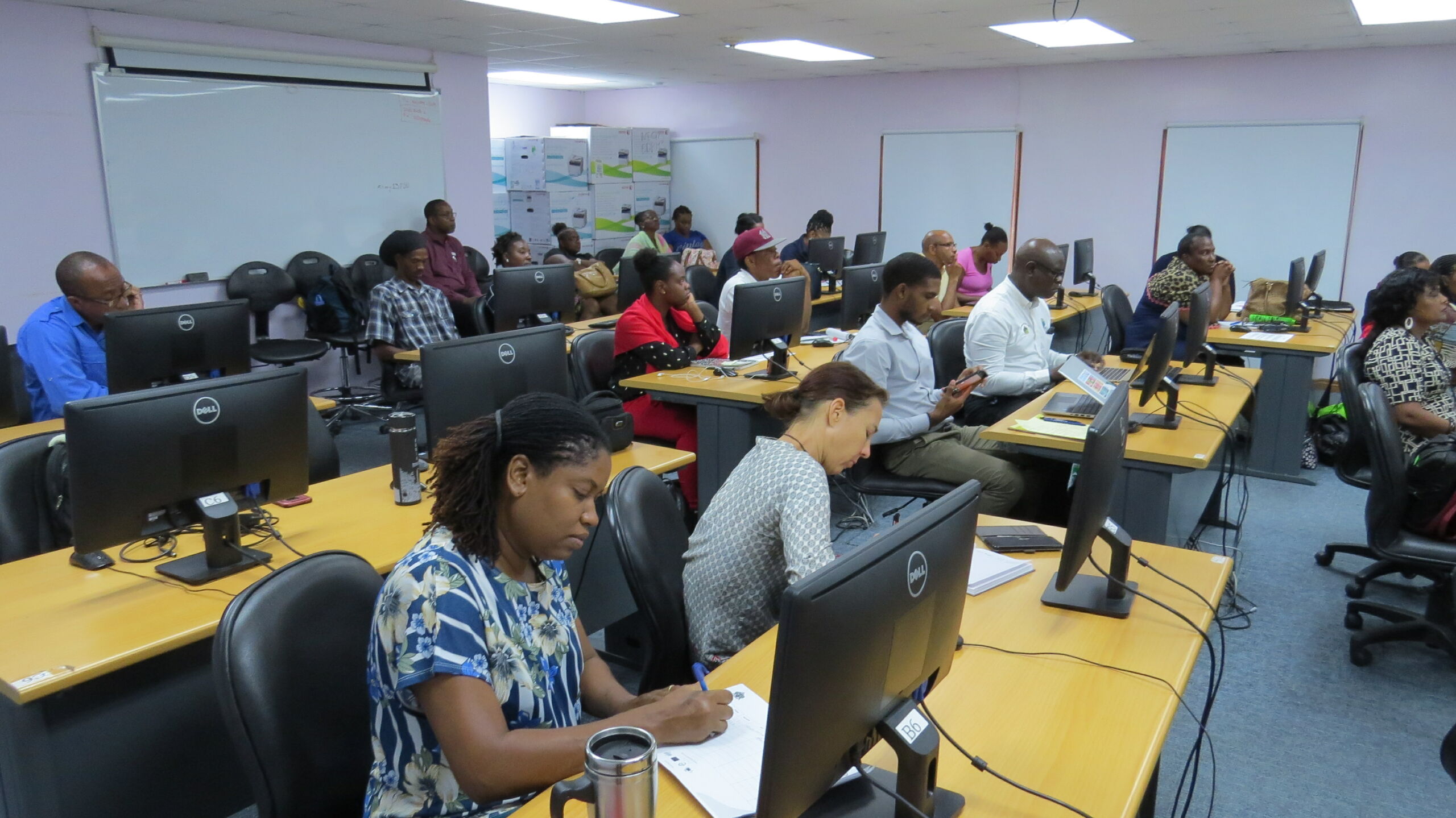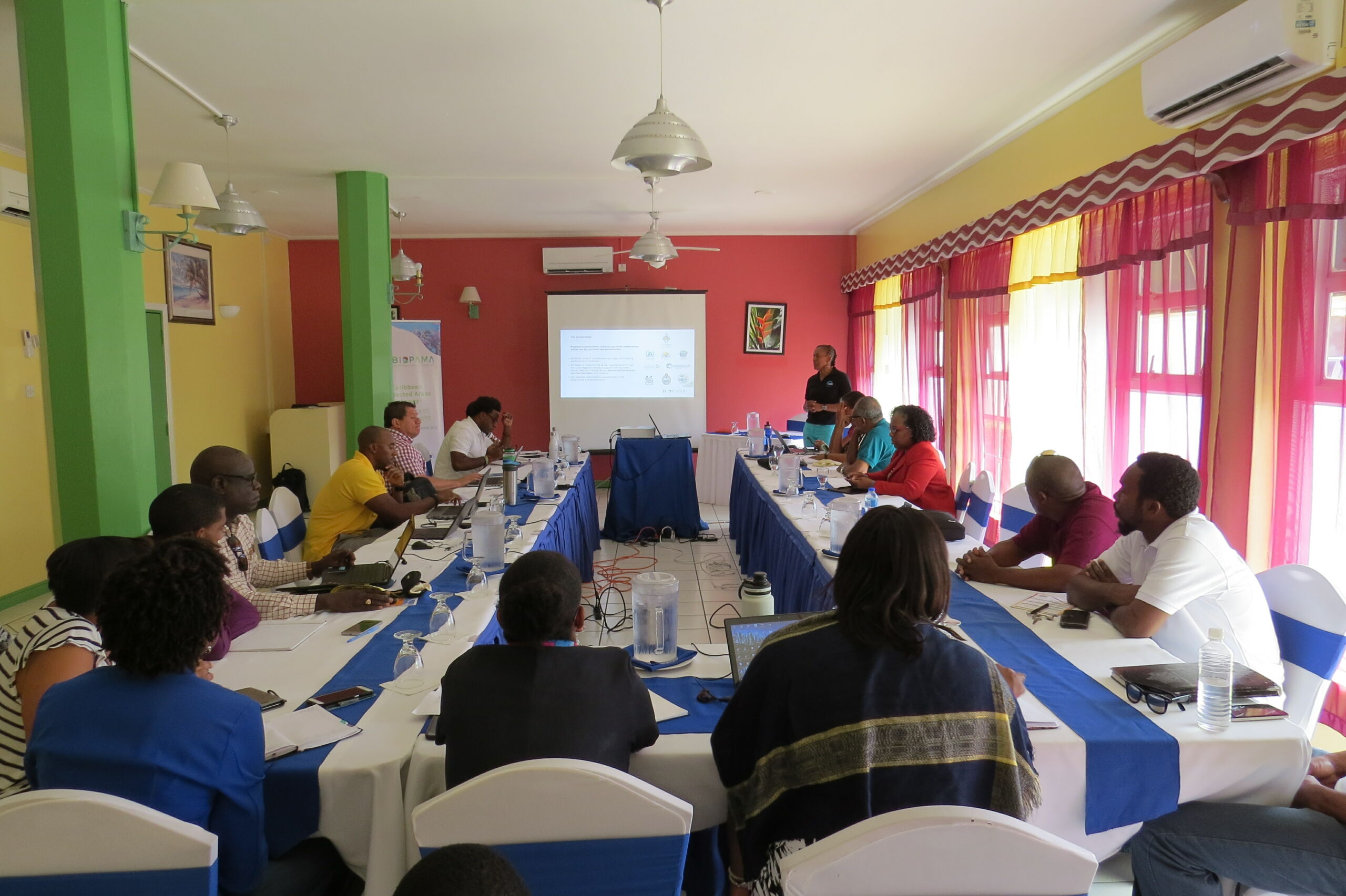The BIOPAMA programme continues to strengthen the capacity of protected area stakeholders across the Caribbean by creating tools to assess Protected Area Management Effectiveness (PAME). The programme has been working with the Department of Sustainable Development (DSD) in Saint Lucia to enhance the country’s management of its national protected area system through a series of workshops between 2019 – 2020.
BIOPAMA facilitated a PAME Framework and Tools National Workshop in Saint Lucia from 9 – 12 April 2019. Twenty-five (25) persons from various government and nongovernmental organisations were introduced to the PAME framework and assessment tools including the Management Effectiveness Tracking Tool (METT) and the Enhancing our Heritage (EoH) Toolkit. The overall objective was to expose persons to the various PAME tools available that can be considered for use in the development of a national tool and for conducting future site level assessments. Additionally Jose Courrau, Thematic expert at The International Union for Conservation of Nature (IUCN) reviewed the UNESCO World Heritage Site, Pitons Management Area (PMA) Management Plan (2003) and provided technical guidance to the PMA Office for the improvement of the management plan.
After a series of in-country meetings coordinated by the DSD, a follow-up national workshop was held from 26 -29 November 2019, where nineteen (19) persons collaborated to develop the Saint Lucia PAME Tool. Through a participatory process participants merged elements of the Advanced Management Effectiveness Tracking Tool (METT) with the Enhancing our Heritage (EoH) Tool used for World Heritage Sites. Questions from both tools were compared, analysed and chosen based on the level of detail required and how effective they would be in capturing the required information during assessments. The tool design process is detailed in the video below.
Saint Lucia PAME Tool Development process briefly explained:
The third national workshop was facilitated from 24 -27 February 2020 to assess The North East Coast – Iyanola Region (NEC-IR). Collectively the BIOPAMA team used The Saint Lucia PAME Tool to conduct three (3) PAME Assessments for the following sites:
- The Pitons Management Area (PMA), UNESCO World Heritage Site;
- The Pointe Sable Environmental Protection Area (PSEPA); and
- The North East Coast – Iyanola Region (NEC-IR).
The PAME Assessments highlighted the following:
- Protected Areas often have multiple agencies with different institutional mandates working in the same spaces; this creates challenges for coordinated management strategies. Therefore, a solid governance structure is important to define mandates and identify organisational roles.
- Staff enforcement powers are usually written in policy but are not actualised on the ground limiting effective enforcement of PA regulations; therefore, management agencies need to empower staff to execute enforcement duties.
- Management agencies often have limited resources to implement activities and must explore methods to mobilize resources and obtain sustainable finance.
- Protected Area agencies should incorporate the results of PAME assessments into their work plans using assessments to forecast budgets and as evidence for funding mechanisms.
Developing a national tool was important for Saint Lucia as it allowed Protected Area agencies to cater specifically to stakeholder requirements and the unique challenges experienced at site level. Asking the right questions allows managers to screen for potential weaknesses in effective management during the PAME process, leading to better outcomes.
Related News

prev










